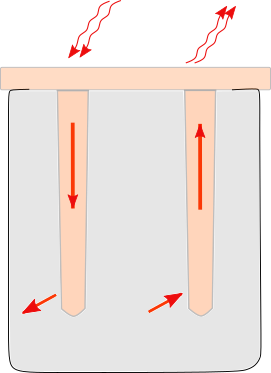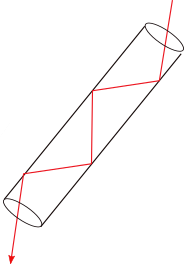Heat transfer options
The table below gives an overview of the different heat transfer options we have tested
 |
Thermal conduction
Energy transfer through conducting fins can be an option for
the cases when a cooker or a fryer is in the form of a hot
plate.
|
 |
Forced convection with a heat transfer fluid
A pump or a fan can be used for circulation of the heat transfer fluid. We try to avoid pumps and fans, as it reduces the robustness of the system and requires power (battery for off-sun periods). However, we have experience with some cases:
|
 |
Natural circulation with a heat transfer
fluid
Hot oil has less density than cold and the
density difference can induce natural circulation between the
heating part of the system and the heat extraction part (the
cooker).
|
 |
Liquid-vapor thermosyphon
A heat transfer fluid can evaporate at the
hot side and condense at the cold side (the cooker). The
condensate drains by gravity back to the hot side. This
gives efficient heat transfer as the temperatures on the hot and
the cold side in the ideal case are equal.
|

|
Heat pipes
A thermosyphon type of heat transfer can be
obtained using a single pipe with counter-current upwards vapor
flow and downwards gravity driven condensate flow. The term
"heat pipe" is, however, mostly used for the case where the
liquid transport is in a wick, in which case it can also work
for horizontal pipes.
|
 |
Light guides
Internal reflecting tubes can guide incoming
rays to the tube outlet. The inlet can be positioned in the
focal point of a dish concentrator and an absorber can be
positioned at the outlet.
|